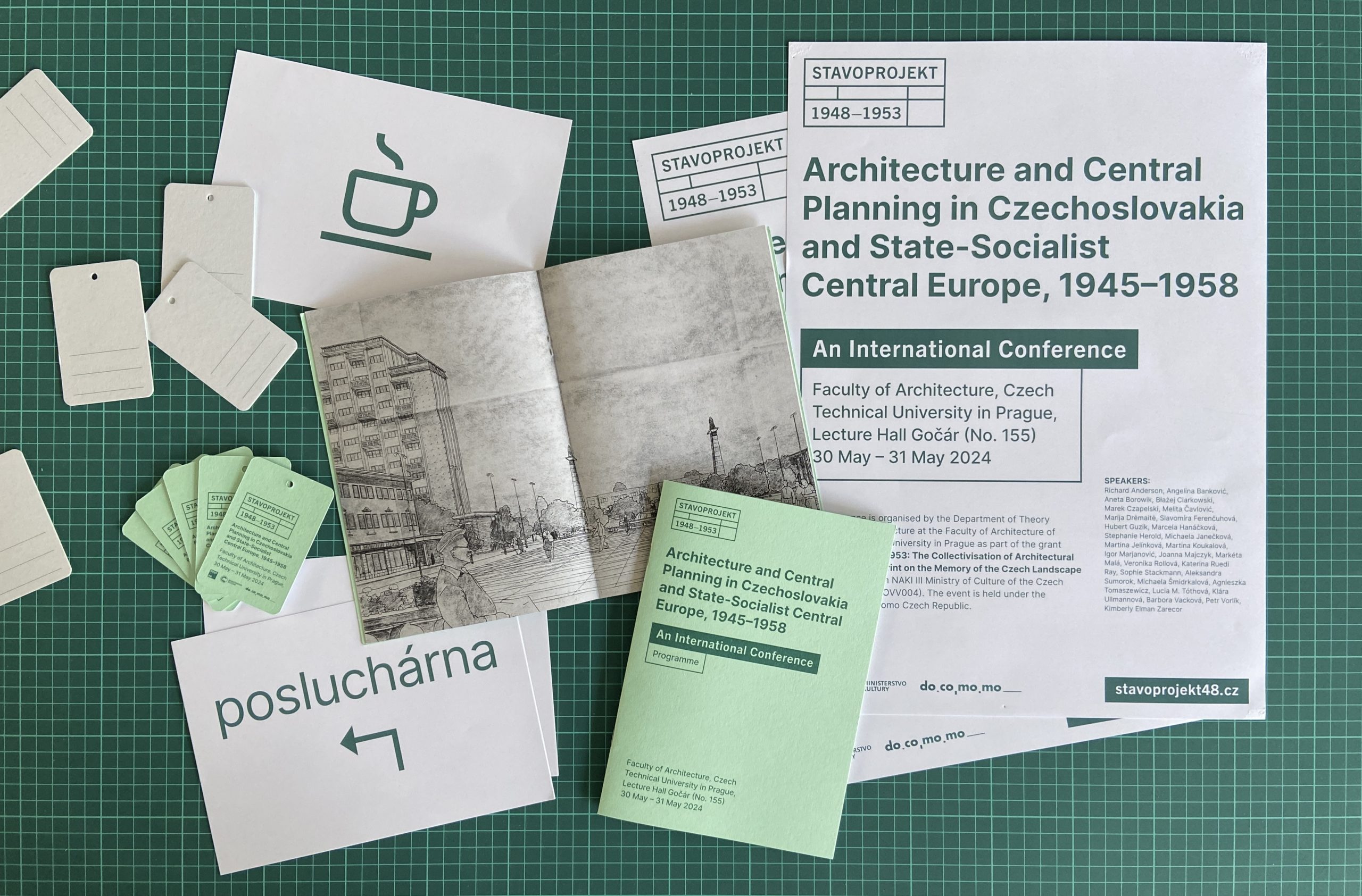
The conference ‘Architecture and Central Planning in Czechoslovakia and State-Socialist Central Europe’ is the very first outcome of the research grant Stavoprojekt 1948–1953: The Collectivisation of Architectural Practice and Its Imprint on the Memory of the Czech Landscape and Towns. Participants from around the globe stayed in Czechia (EU) for three days to join the two-day programme at the Faculty of Architecture of the CTU in Prague (30 and 31 May) and the one-day architectural excursion to Kladno in the Central Bohemian Region (1 June).
The Dean of the Faculty of Architecture Dalibor Hlaváček gave an official welcome speech followed by organisational remarks by Klára Brůhová from the conference organising committee.
Sessions 1 and 2, under the title Institutions, focused on continuities and changes in the institutional environment of architectural practice. Introduction to the section was given by Kimberly Elman Zarecor, who was also chair of both sessions. Richard Anderson, Marija Drėmaitė, and Stephanie Herold concentrated in their individual papers on the political and cultural backgrounds of architectural and building centralisation in the Soviet Union, Lithuania, and the German Democratic Republic. The second session consisted of case studies of architectural practice within state-controlled system in Poland and East Germany, presented by Marek Czapelski, Aleksandra Sumorok, and Sophie Stackmann.
Sessions 3 and 4, under the title Stavoprojekt, formed the core of the conference as each paper developed the context of architect’s work from a detailed fact-based description of the Stavoprojekt Design Institute in former Czechoslovakia. The chair of the section was Peter Szalay. Papers presented by Lucia Tóthová, Klára Ullmannová, Petr Vorlík, and Michaela Janečková depicted the functioning of the organization. On the other hand, Martina Jelínková, Slavomíra Ferenčuhová, Michaela Šmidrkalová, Barbora Vacková and Markéta Malá took a closer look at specific buildings designed by Stavoprojekt in their case studies.
The second day of the conference began with the topic of architectural education in state-socialist Central Europe after World War II. In session 5, Igor Marjanović, Katerina Ruedi Ray, Veronika Rollová, and Błażej Ciarkowski searched for intersections between the state power and university (educational) freedoms in East Germany, Czechoslovakia, Hungary, and Poland. Session 6 thematically followed up by architectural research during Stalinism. Marcela Hanáčková and Hubert Guzik debated the application of political socialism to architectural theory. Both sessions were moderated by Vítězslav Sommer.
The two concluding sessions 7 and 8 focused on the theme of architecture and central planning from a local perspective. Participants brought an incredibly wide range of architectural and urban planning examples from across Eastern and Southeastern Europe: Martina Koukalová – Prague, Aneta Borowik – Katowice, Joanna Majczyk – Wrocłav, Angelina Banković – Belgrade, and Melita Čavlović – Zagreb. Dániel Kovács was the chair of the two sessions.
The closing remarks, given by Kimberly Elman Zarecor, opened a fruitful discussion amongst the participants and gave an opportunity for reflection and review of the two-day conference. Within the discussion, participants were able to give feedback, provide suggestions on formats, methods, and formulate ideas and proposals for future research.
The third day was dedicated to an informal architectural excursion to Kladno-Rozdělov. Guided tours of the Rozdělov Tower Blocks Museum and of the Mayrau Mining Museum in Kladno-Vinařice were prepared for those interested.
The conference organizing committee thanks all the participants for sharing their thoughts and research. The committee also expresses gratitude to all chairpeople and members of the scientific committee. We look forward to continuing the discussion and discovering common architectural contexts.
The Department of Theory and History of Architecture FA CTU expresses sincere and grateful thanks to the graphic designer and, most importantly, to great person Jan Forejt. Jan collaborated with the Department for a very long time on the creation of numerous publications and is also the author of the entire graphic visual of the Stavoprojekt 1948–1953 project. We will all miss him.
The conference was organised by the Department of the Theory and History of Architecture at the Faculty of Architecture, Czech Technical University in Prague, as part of the grant project ‘Stavoprojekt 1948–1953: The Collectivisation of Architectural Practice and Its Imprint on the Memory of the Czech Landscape and Towns’ (Programme NAKI III Ministry of Culture of the Czech Republic, DH23P03OVV004). The event was held under the auspices of Docomomo Czech Republic.